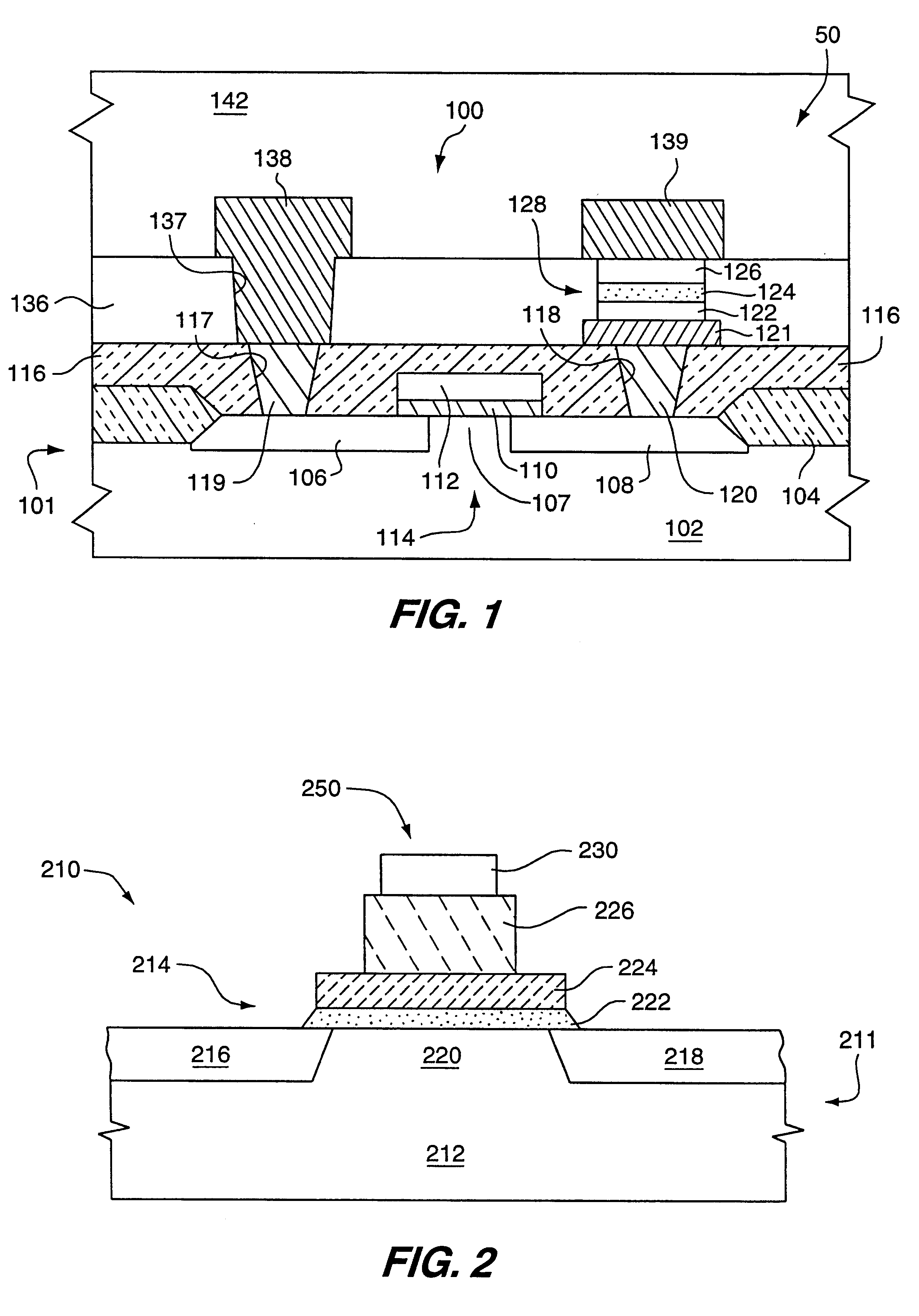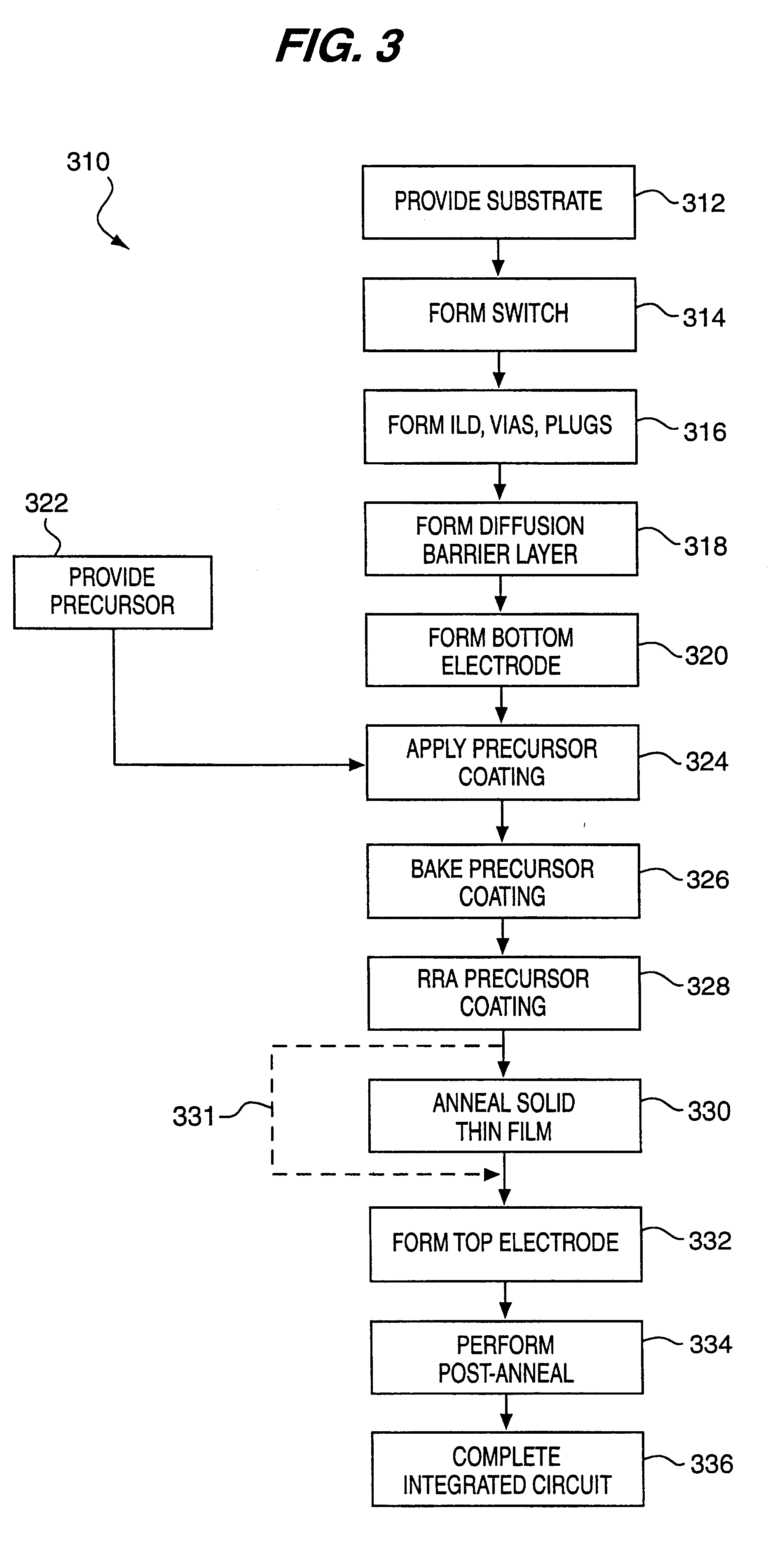Low temperature rapid ramping anneal method for fabricating layered superlattice materials and making electronic devices including same
a superlattice material and low temperature technology, applied in the direction of polycrystalline material growth, crystal growth process, after-treatment details, etc., can solve the problems of deterioration of the electronic characteristics of the mosfet, economic unfeasibility, oxygen damage to the semiconductor substrate and other elements of the cmos circuit,
- Summary
- Abstract
- Description
- Claims
- Application Information
AI Technical Summary
Problems solved by technology
Method used
Image
Examples
example 1
Ferroelectric thin film capacitors, as depicted in FIGS. 4 and 5, containing a thin film of strontium bismuth tantalate layered superlattice material were fabricated in accordance with the invention. The remanent polarizations of the capacitors were measured and compared to study the effects of processing conditions on ferroelectric polarizability.
Each of a series of P-type 100 Si wafer substrates 502 was oxidized to form a layer of silicon dioxide 504. The substrate was dehydrated in a vacuum oven at 80.degree. C. for 30 minutes. An adhesive layer 506 consisting substantially of titanium and having a thickness of 100 nm was sputter-deposited on the substrate, using an argon atmosphere, 8 mTorr pressure and 0.53 amps. Then, under similar sputter conditions, a bottom platinum electrode 508 layer having a thickness of 200 nm was deposited. On each wafer, the bottom electrode layer was pre-annealed at 650.degree. C. for 30 minutes in O.sub.2 gas flowing at 6 l / m, using 10 minute push-p...
PUM
 Login to View More
Login to View More Abstract
Description
Claims
Application Information
 Login to View More
Login to View More - R&D
- Intellectual Property
- Life Sciences
- Materials
- Tech Scout
- Unparalleled Data Quality
- Higher Quality Content
- 60% Fewer Hallucinations
Browse by: Latest US Patents, China's latest patents, Technical Efficacy Thesaurus, Application Domain, Technology Topic, Popular Technical Reports.
© 2025 PatSnap. All rights reserved.Legal|Privacy policy|Modern Slavery Act Transparency Statement|Sitemap|About US| Contact US: help@patsnap.com



